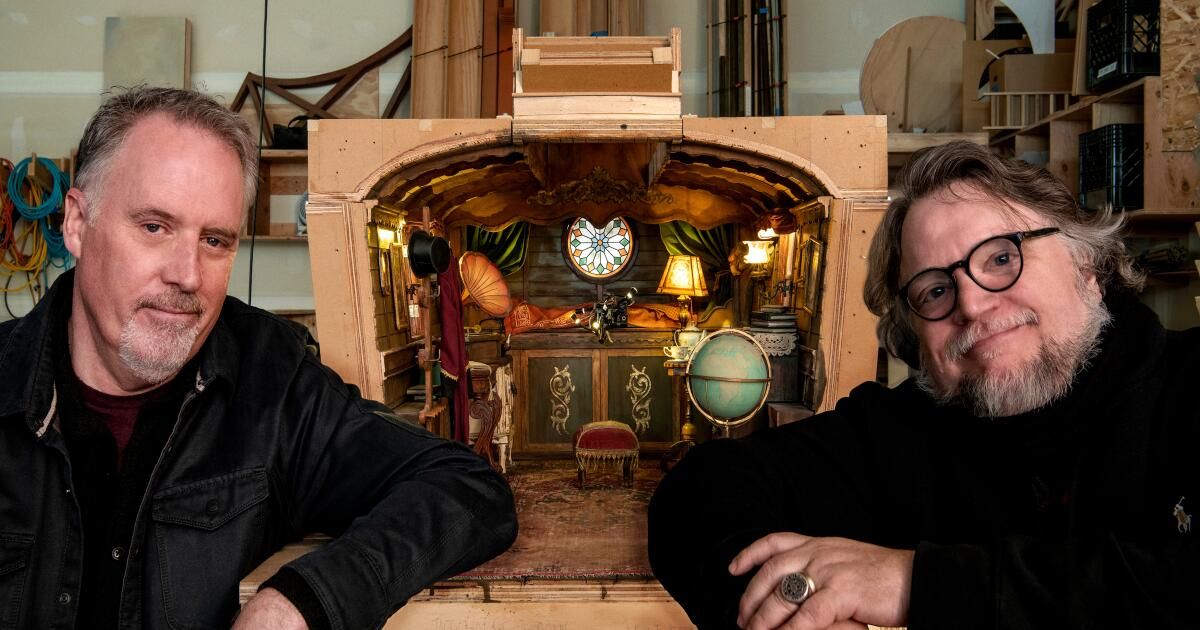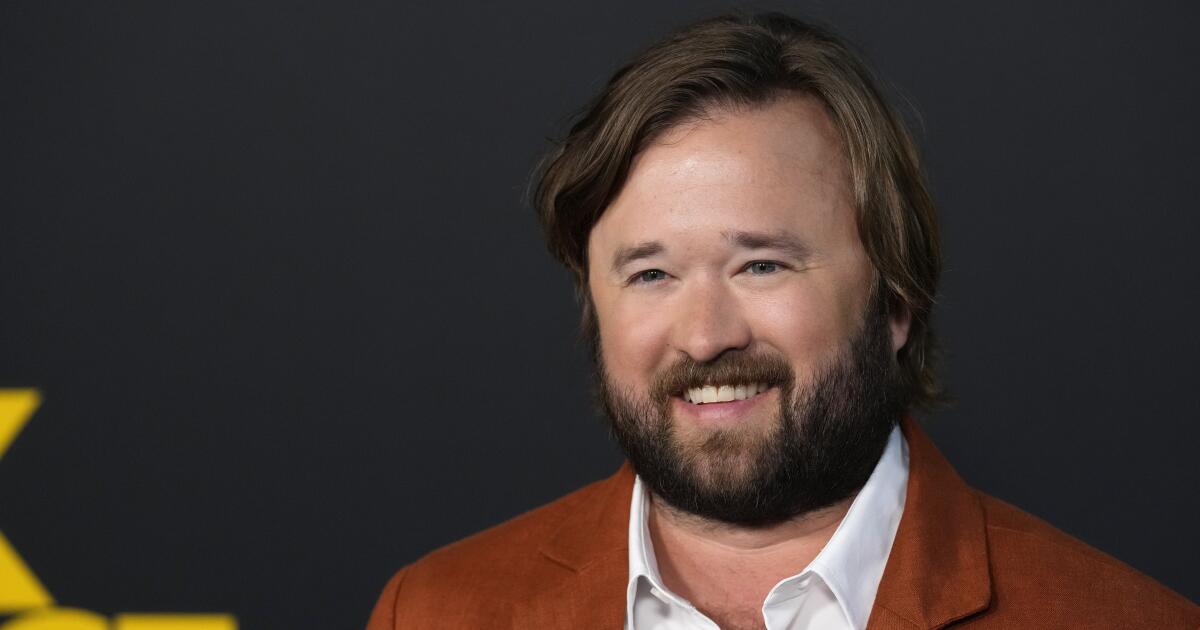Every second counts when you work in stop-motion animation.
The process essentially involves taking a photograph of one object and then moving it slightly to take another until the assembled sequence of these frames creates the illusion of movement. One second of footage requires 24 carefully crafted takes.
That's the movie magic that Mark Gustafson, the Oscar- and Emmy-winning animation expert who died Thursday at age 64, mastered for four decades turning inanimate figures into physicality and emotion, one frame at a time.
“It's like playing with toys, very expensive toys, with all your friends,” Gustafson told A.frame, the online magazine of the Academy of Motion Picture Arts and Sciences. “And five years later, you have a movie.”
A sentient nut, wonderful raisins, a mischievous fox, and a wooden boy were among the numerous creatures Gustafson guided into fascinating on-screen performances, either by his own hand or through a directing position. Even if he didn't get top billing on most projects, his contributions were never less than integral.
Connecting to The Times via email this weekend, Mexican director Guillermo del Toro called Gustafson “a faithful storyteller who had much to add to a medium that needs true believers.”
Del Toro and Gustafson co-directed the 2022 stop-motion film “Guillermo del Toro's Pinocchio,” for which they received the Academy Award for Animated Feature Film last March.
A scene from the animated film “Pinocchio by Guillermo del Toro”.
(Netflix)
It was the skeleton fight scene in the 1963 fantasy film “Jason and the Argonauts” that first sparked Gustafson's curiosity about what would become his calling.
“I couldn't tell what I was looking at,” he said, recalling watching the film in his childhood on his family's black-and-white TV during a question-and-answer session for the California Film Institute in late 2022. I knew that human hands had touched this somehow. Years later I found out that this guy, Ray Harryhausen, had done it all himself – one guy.”
That appreciation for the art of stop motion, inevitably susceptible to human excellence and error, propelled Gustafson throughout his career.
He initially studied graphic design, but soon lost interest and, in the late 1970s, made 8mm films with friends. His journey into animation began to take shape in the early 1980s, just after graduating with a degree in art from Pacific Northwest College of Art.
Originally from Portland, Oregon, Gustafson benefited from good timing: the city became an epicenter of stop-motion animation just as he was coming of age.
Hired as a production assistant at the pioneering Will Vinton Studios, the home of stop-motion legend Will Vinton, creator of the all-singing California Raisins, Gustafson ran errands and swept floors until he got the chance to try his hand at filmmaking. construction of sets.
He later discovered the ability to sculpt figures and eventually animate them. In 1985's “The Adventures of Mark Twain,” Vinton's ambitious feature film, Gustafson served as lead animator for the Huck Finn character, in charge of expressive facial gestures.
“If I talk to an animator about a shot, the first thing I talk about is the eyes and then everything cascades from there,” Gustafson told Collider in 2022. “When you see a character thinking, they're alive. “
Popular TV specials “Meet the Raisins!” “Claymation Easter,” for which Gustafson won an Emmy, followed, as well as a series of memorable commercials for brands like Planters (revamping Mr. Peanut) and Nissan (using Barbie-like dolls).
But it wasn't until the 1994 short film “Mr. Resistor” that Gustafson finally told his own story. “Mr. Resistor” follows a creature whose body is made up of discarded pieces of ancient technology that spontaneously comes to life. It allowed Gustafson to step away from clay and experiment with other materials.
A wordless short, “Mr. Resistor” reflects the biting humor that characterized Gustafson himself. That aspect of his personality becomes instantly evident when watching any of the dozens of question-and-answer conversations filmed during the awards campaign for “Guillermo del Toro’s Pinocchio.”
For all its success, Gustafson expressed only cautious optimism for stop-motion, especially before Laika, the company that replaced Will Winton Studios, had established itself.
In a 1999 interview with Animation World Network about the making of “The PJs,” an Emmy-nominated adult animated comedy centered on black characters, Gustafson, the show's supervising director, reflected on the future of his practice.
“I don't think stop motion will ever be as big as cell phones or computers,” he said. “I'm sure stop-motion will always have its niche. However, I have my doubts about whether it will become the dominant art form in animation.”
Beloved and idiosyncratic auteur Wes Anderson hired Gustafson as animation director on “Fantastic Mr. Fox” in the early 2000s, based on the recommendation of another stop-motion legend, Henry Selick, director of “The Nightmare Before Christmas” and “Coraline”. ”
Gustafson's name was synonymous with a high level, which required enormous reserves of patience and discipline. Speaking again to Animation World Network in 2009 about working on “Fantastic Mr. Fox,” Gustafson called the stop-motion technique “inherently miserable.”
“There's a certain masochistic element,” he added, “but it's also quite satisfying to animate a scene that really works when the characters come to life.”
By the time Guillermo del Toro's long-in-development “Pinocchio” finally went into production, Gustafson had accumulated decades of invaluable experience. His darkly whimsical reinterpretation of Carlo Collodi's 19th-century fable recruited animators in Portland and Guadalajara, Mexico.
Del Toro remembers that Gustafson “knew how to set the pace and encourage a team” and inspired all the entertainers who knew him.
“When we interacted at every step of the production stages, he was unwavering and inventive,” del Toro told The Times. “His ingenuity of his will be unparalleled…ever.”
On the podium, giving his acceptance speech at the Oscars last year, Gustafson said, “It's so good to know that this art form we love so much, stop-motion, is alive and well.”
For a moment, it seemed like any fears about what would happen with this mind-bogglingly demanding technique had vanished.












